|
| ||||||
mailto: blog -at- heyrick -dot- eu
You are not reading my b.log using HTTPS. You can switch to HTTPS by clicking here. Ooo-eck!Instead of the usual little brown wall lizards, I came across this monster. Proof of Global Warming? ☺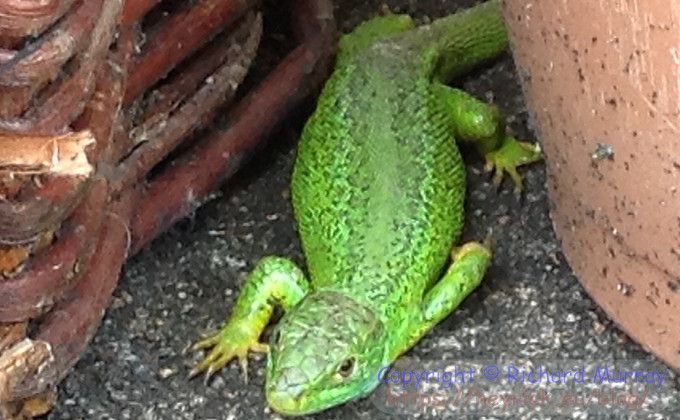
Mowing - how it should be doneWith many thanks to Ph., our grass has been tamed. Of course, we don't make much headway using a little petrol mower that sort-of cuts strips about a foot wide (actually it does about 2ft wide, but you need to half-pass on the way back so really you are only gaining a foot each pass).
That's not how to mow. 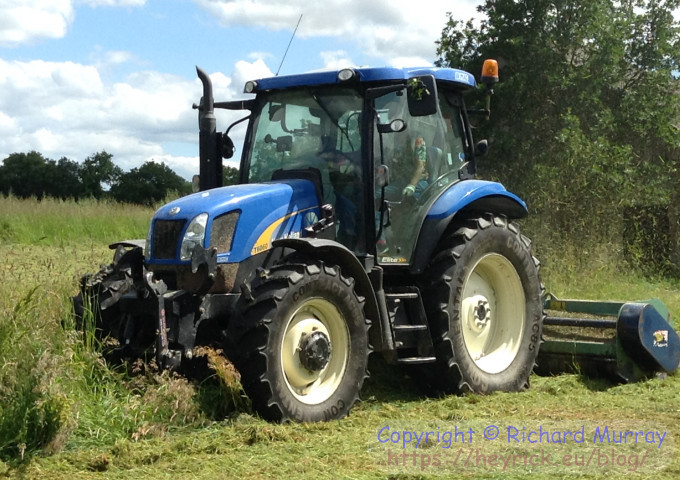 The little tractor made fairly light work of it, getting it done in maybe half an hour. And since the tractor was small, it could squeeze into all sorts of tight spaces and turn in places that defy belief. 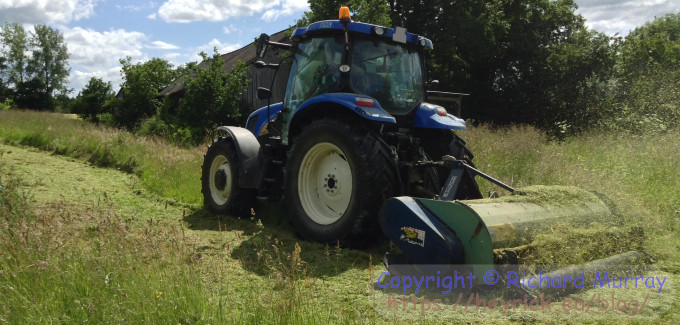 Seriously - how long would this have taken using the petrol mower? Days? Weeks? I'm thinking maybe two weeks (every day, not going to work but mowing instead). 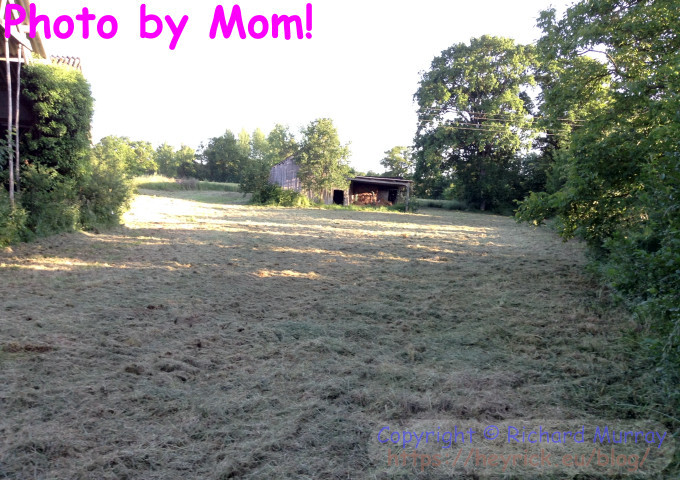 Thanks Ph.! (oh, and Mom - I want one of those for my birthday!)
Another Sunday, another vide grenierToday's acquisition, a Samsung SDC-415PD security camera, for a mere €3. I almost didn't buy it, the man said it worked with SÉCAM, but on consideration I figured about zero foreign equipment understands SÉCAM, so the worst that will happen will be that it's an NTSC model.It wasn't. The P in the model number means PAL, the D means it runs off 12V DC. The imager is a 1/3" Sony CCD with 752×582 pixels, claiming around 520 TV lines resolution (a normal CCD camera manages around 470ish). Output is composite video, with colour imaging that works down to 0.3Lux (with an F1.2 lens), however the camera can switch to a more sensitive monochrome mode and apply some push processing to apparently (so the docs claim) work down to 0.002Lux (F1.2). How this fares in reality is something I'll need to see. The camera was produced in 2005. 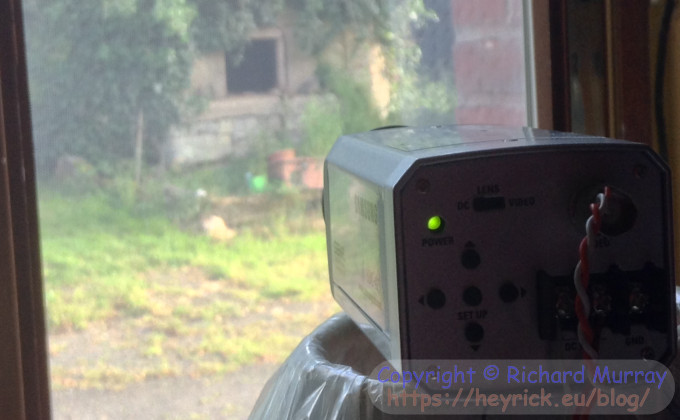 The camera can accept C and CS mount lenses, which can either control themselves or have the iris controlled by the camera. My camera is fitted with a CS lens that is driven by the camera. 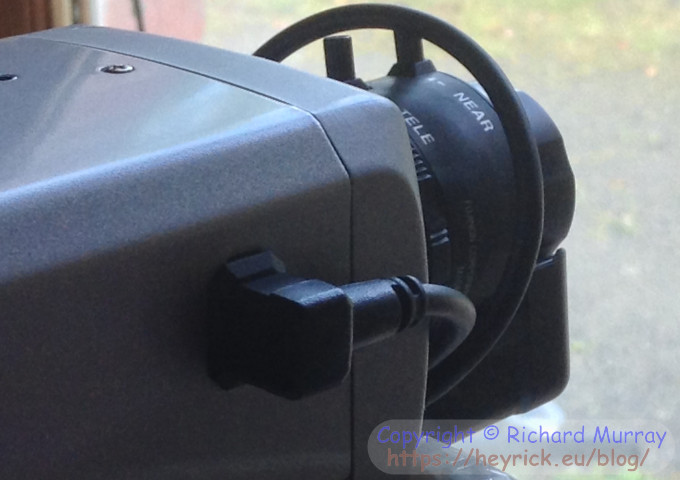 Here it is, hooked to that little LCD TV that I picked up a couple of weeks ago. The iPad didn't much like taking photos of this, so I apologise for the poor quality of the photos. It was a lot simpler/quicker than hooking up the USB video frame grabber. 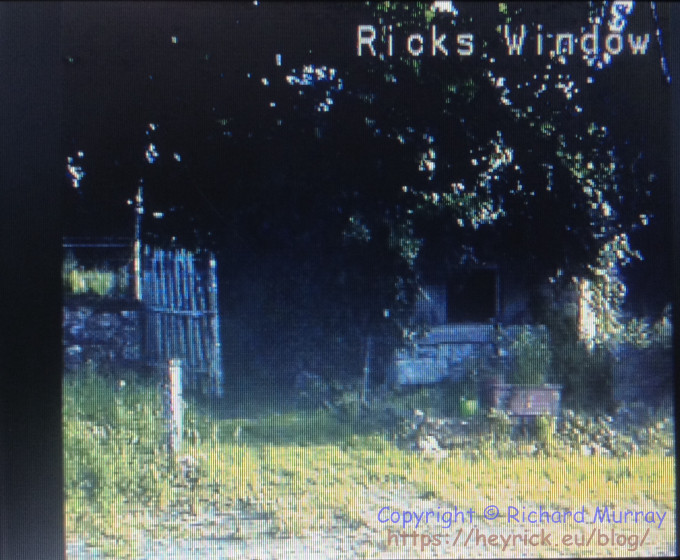 You can see a caption on-screen "Ricks Window". The camera contains a 16 bit CPU/DSP combo (the WinnerIII) that processes the image, reduces noise, and can provide an on-screen menu. Features, asides from full control of brightness, white balance, iris, etc are a motion detection that will flash up a message if motion is detected. My camera flashed up the notification when the sun came out. There may be a sensitivity option that I have not yet discovered. You can set up to four rectangular zones to be scanned for motion 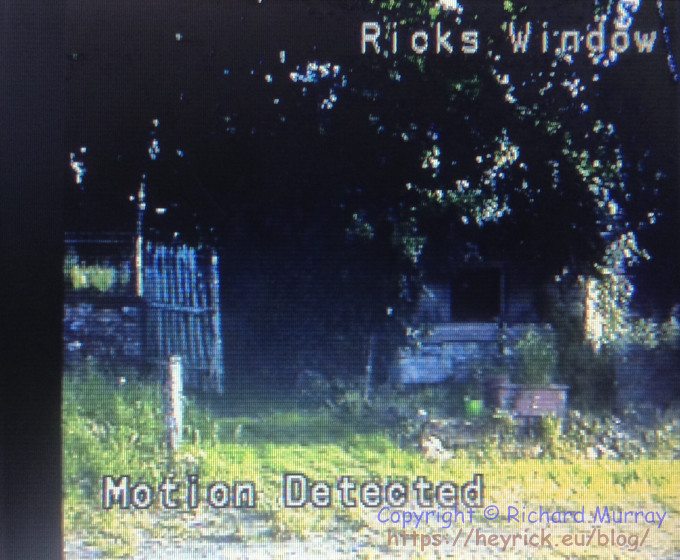 Because of increasing concerns over privacy, the camera has a way to be able to mask out up to four rectangular zones of the image. In the example below, the garden gate is masked out. The masking can be set to any grey level from white to black. 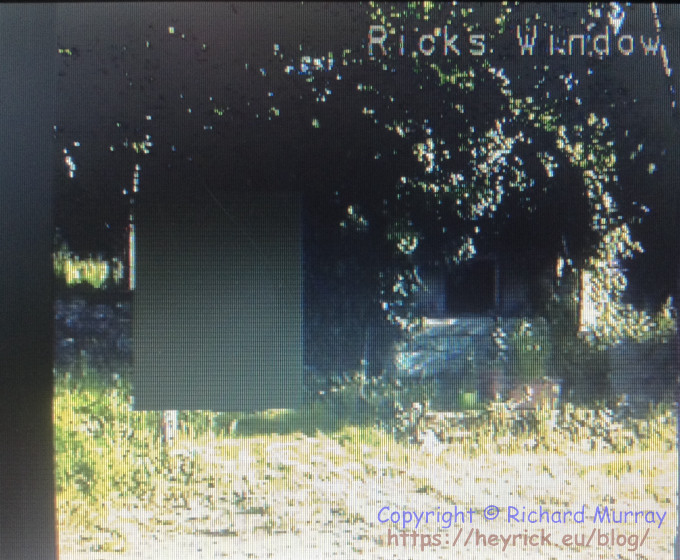
As I write this, it is approaching twilight. Both the CCD camera and my iPad produce good images looking out of my window. The iPad provides a better picture at the moment (but we're comparing a TV resolution fixed-purpose camera with a 5mpx multipurpose tablet). The real test will be when the light levels drop below what the iPad is capable of compensating for. At this exact moment in time, the iPad's camera is starting to get a bit grainy, all the more evident if you 'zoom' in halfway (digital zoom). The security camera looks sort of like it looked earlier, though as the light level drops, I can see there are seven blown pixels (that show up as white dots). Not so important in a security camera, but if I should ever try to hook this to my telescope or some idea of that nature, I'll need to make up a mask to allow those pixels to be taken out of the image.
Okay, it is now twenty to eleven. On the left is what the security camera sees, and on the right is what the iPad can see: 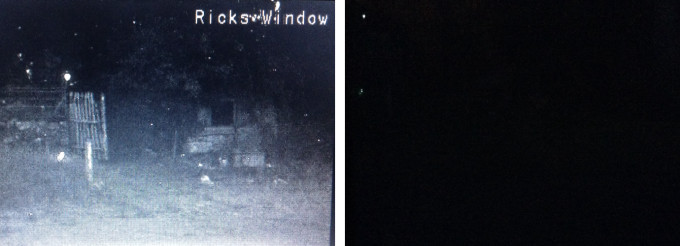
But, here comes the astonishing thing. It is now ten past eleven at night. Looking out of my window, I can see complete darkness save for a partially obscured half moon and the various solar lamps. I might see if I was to go into a dark place for a while to let my eyes adjust. I just went out to close my shutters and I could only just make out the garden gate if I tried really hard. 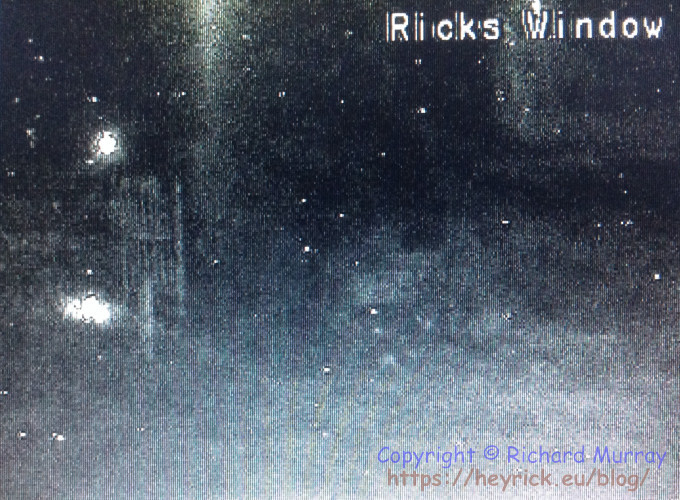 Incidentally, this is what the on screen menu looks like (the ghosting in the picture is because my video connection is some bits of wire I had lying around!): 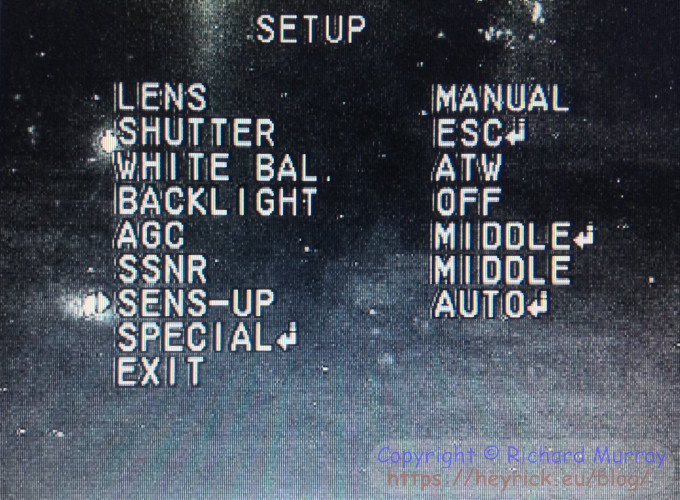
Because it's me... Inside the camera are three boards. The middle board is mostly bare (and the space inside the box, mostly empty). This can be used to convert down 24VAC to 12VDC, it can also be used to convert 230VAC to 12VDC. Depends on the model. Since mine runs directly off 12V, there's nothing here. 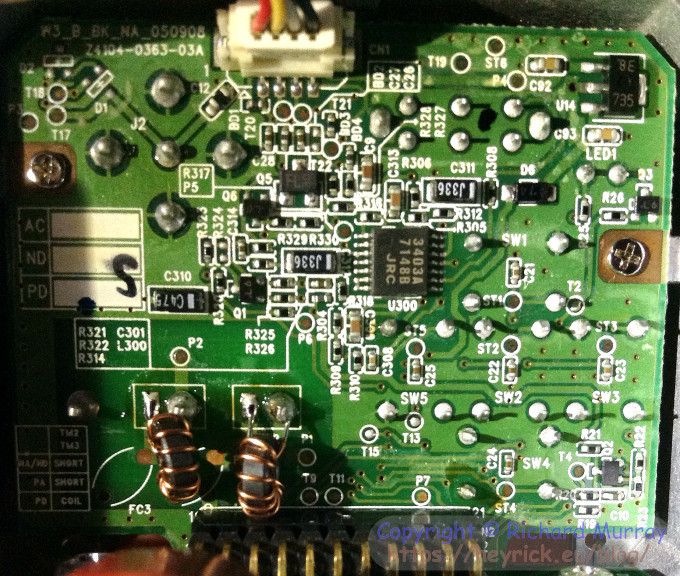 On the other side, the board at the front holds all the smarts. The big chip is the DSP. I would guess the one beside with the stuff stamped on it is either Flash or SRAM. I have not been able to find a datasheet for the (proprietary) WIII chip. The screw mounts in the middle of the board hold the CCD imager, which is mounted on the reverse. 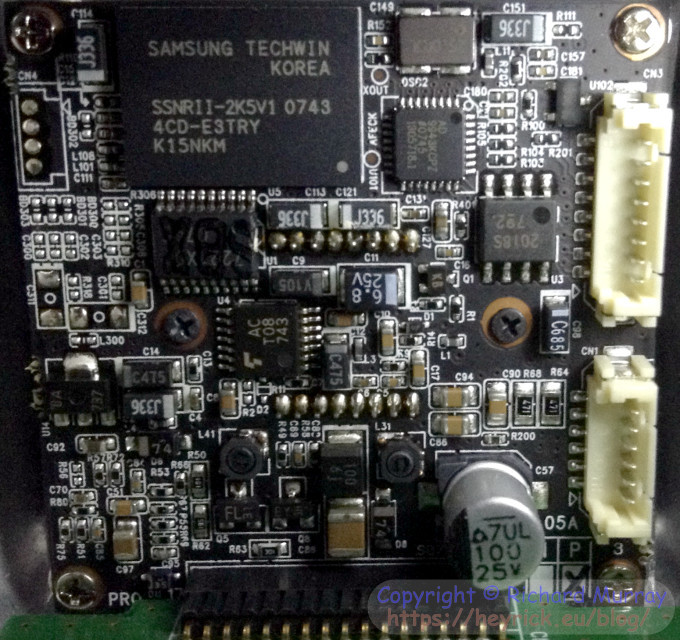
Your comments:Please note that while I check this page every so often, I am not able to control what users write; therefore I disclaim all liability for unpleasant and/or infringing and/or defamatory material. Undesired content will be removed as soon as it is noticed. By leaving a comment, you agree not to post material that is illegal or in bad taste, and you should be aware that the time and your IP address are both recorded, should it be necessary to find out who you are. Oh, and don't bother trying to inline HTML. I'm not that stupid! ☺ ADDING COMMENTS DOES NOT WORK IF READING TRANSLATED VERSIONS.
|
(Felicity? Marte? Find out!)
📺 The SIBA stories 📹
It's a simple substring match.
Last read at 18:09 on 2024/04/24.


| ||||
| Next entry - 2014/06/16 Return to top of page |
| © 2014 Rick Murray |
| Retrieved from http://www.heyrick.co.uk/blog/index.php?diary=20140608 on 24th April 2024 |


